Viltrox Pro AF 27mm F1.2 E-Mount Review
Dustin Abbott
January 18th, 2024

When the Viltrox Pro AF 75mm F1.2 arrived in Sony E-mount earlier in 2023, I was very impressed. I had expected a simple port of the lens over to Sony, but Viltrox exceeded my expectations by adding additional features (custom button, AF/MF switch, declick option) and delivering a much improved autofocus performance on Sony. I loved the Fuji X-mount version of the second lens in the series – the Viltrox Pro AF 27mm F1.2 – and I was very excited by the notion of getting similar treatment on E-mount. The Sony E-mount version of the Viltrox Pro AF 27mm F1.2 has arrived (we’ll call it the Pro AF 27E), and, as expected, it is a treat to use on Sony. Sony’s 1.5x APS-C crop means that this lens frames like a 40mm equivalent lens on full frame, and that’s a focal length I love for walk-around, general purpose, and people photography. You can get my full thoughts by watching the video review below…or just read on.
Follow Me @ YouTube | Patreon | Instagram | Facebook | DA Merchandise | Flickr | 500px | X
Thanks to Viltrox for sending me a review sampler of this lens. As always, this is a completely independent review. *The tests and most of the photos that I share as a part of my review cycle have been done with the APS-C mode (26MP) Sony a7RV.
__________________________________________________________________________________________________
As on Fuji, there isn’t really an direct 27mm competitors. On Sony the closest lens is either a 24mm F1.8 or the 35mm F1.8 OSS lens. The former is now 12 years old and still costs $1000 USD, while the latter is 11 years old and costs roughly $450 USD. Some third party brands make both a 23mm and a 33mm F1.4 lens (essentially 35mm and 50mm full frame equivalent lenses), so the 27mm F1.2 falls right in between those two in terms of focal length. Sigma does have a 30mm F1.4, but that lens is now 7 years old, and, having owned it, I can safely say that it is not in the class of the Viltrox Pro AF 27E in terms of performance. And none of these lenses are F1.2, either. The Viltrox can be had for under $550 if you buy from Viltrox and use the code DUSTINABBOTT will get you an additional 8% off but the biggest reason to buy the lens is its performance.

Not only is it ridiculously sharp even at F1.2, but it also manages to have lovely rendering and bokeh at the same time.

The greatest negative for the Pro AF 27E will be the size, as it is larger than competing lenses, but I happen to think that the performance more than justifies the size.
Build and Handling
As with the Sony E-mount version of the Pro AF 75mm F1.2, we have a more thorough feature set. If you take a look at the X-mount version on the left, you’ll notice several missing controls vs the new E-mount version on the right:
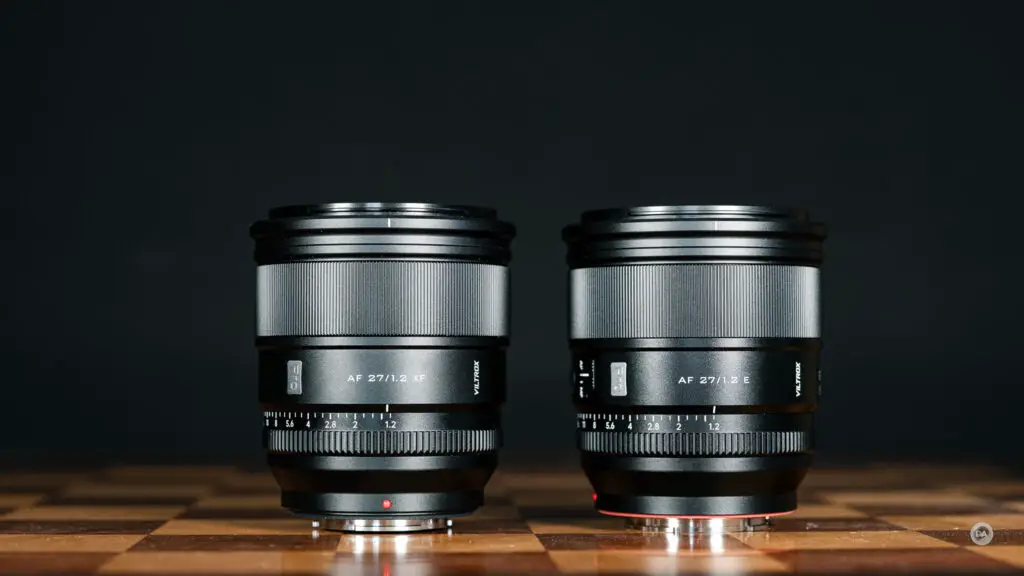
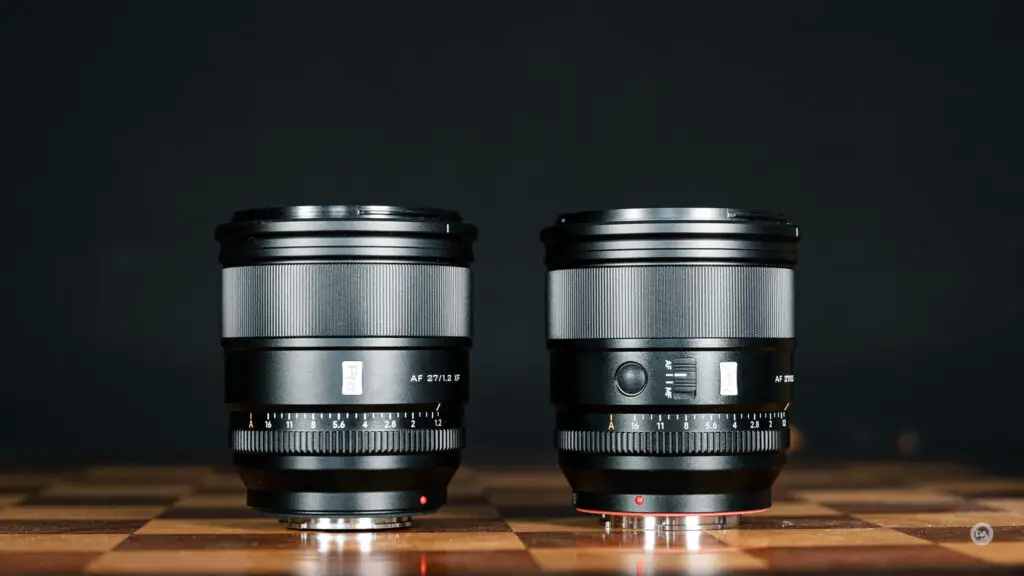

These include:
- A focus hold/custom button
- AF/MF switch
- Switch to declick the aperture
Shared with the X-mount version is the aperture ring. The aperture ring is pretty standard for recent Viltrox lenses, with a clicked aperture ring that features detents at each one third stop. There is an “A’ position past F16 (minimum aperture here) that will allow you to instead control aperture from within camera if you aren’t an aperture ring person. The key improvement on the Sony version is that smoother aperture racking is now available if you choose to use the aperture declicked.
There is a higher than average 11 aperture blades inside, which happens to be the number that Sony also chooses to use on some of its high end G Master primes.

The lens 82mm/3.22″ in diameter (with a very common 67mm front filter thread) and is 92mm/3.62″ in length. On my scale it weighs 571g or about 20oz. It makes sense that the Sony E-mount is a bit heavier (11g) than the X-mount version due to the additional features and also the fact that the E-mount is a little wider in diameter than X-mount. That’s a fairly large lens for APC-C (at least in diameter and weight), though it is a bit smaller than the big brother 75mm F1.2.
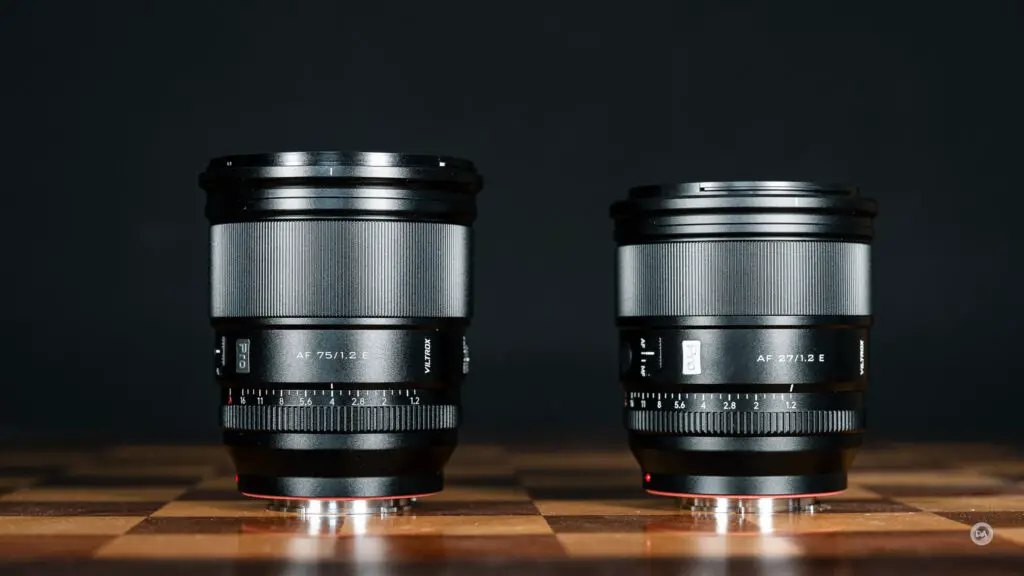

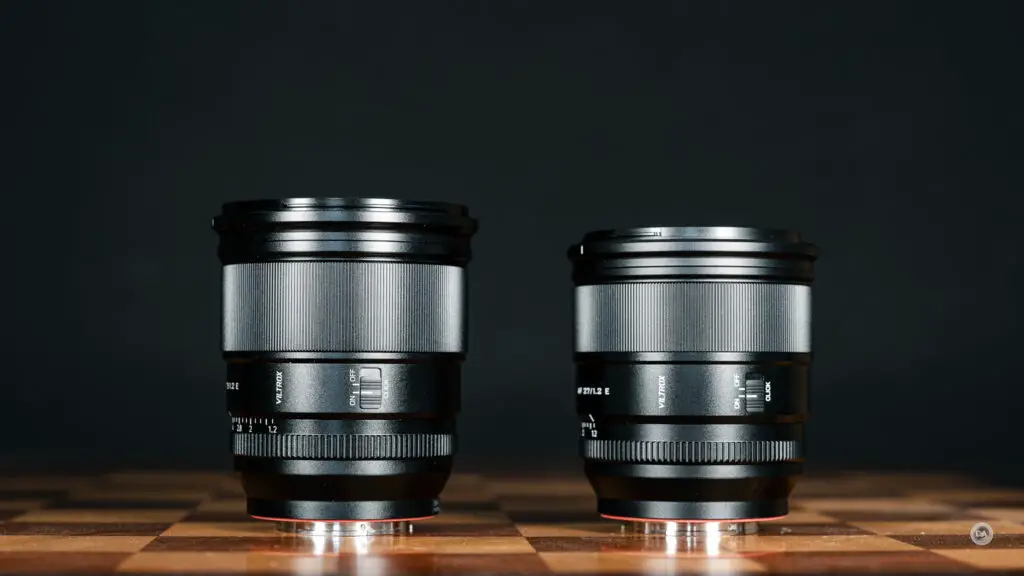
That makes it 5mm narrower, 9mm shorter, and 104g lighter than the 75mm, but that doesn’t change the fact that is larger and heavier than most prime lenses on Sony APS-C. These Viltrox Pro series lenses are much like the early Sigma ART lenses on Canon and Nikon; often larger and heavier, but compensating with very high optical performance. The appeal of these lenses is going to depend a lot on your personal priorities as a photographer. Do you want to travel light…or do you want peak performance?
Viltrox gives us a thoroughly weather sealed design here. Because I’m reviewing a pre-release copy, I’m recycling the seal point diagram from the X-mount version. I count 10 seal points here, but would expect three more in the E-mount version due to two extra switches plus a custom botton.

This is an internally focusing lens, so there is nothing that moves where dust might intrude. There’s also an HD-Nano multilayer coating on the front element to help with water and fingerprint resistance, making the front element easier to clean. As always, however, “moisture-proof” does not mean “water-proof”, so don’t go crazy!
I slightly prefer the appearance of the Sony E-mount versions, as, for some reason, Viltrox employs a stylish orange/red color to the rear sealing gasket only on Sony that adds a bit of style points.
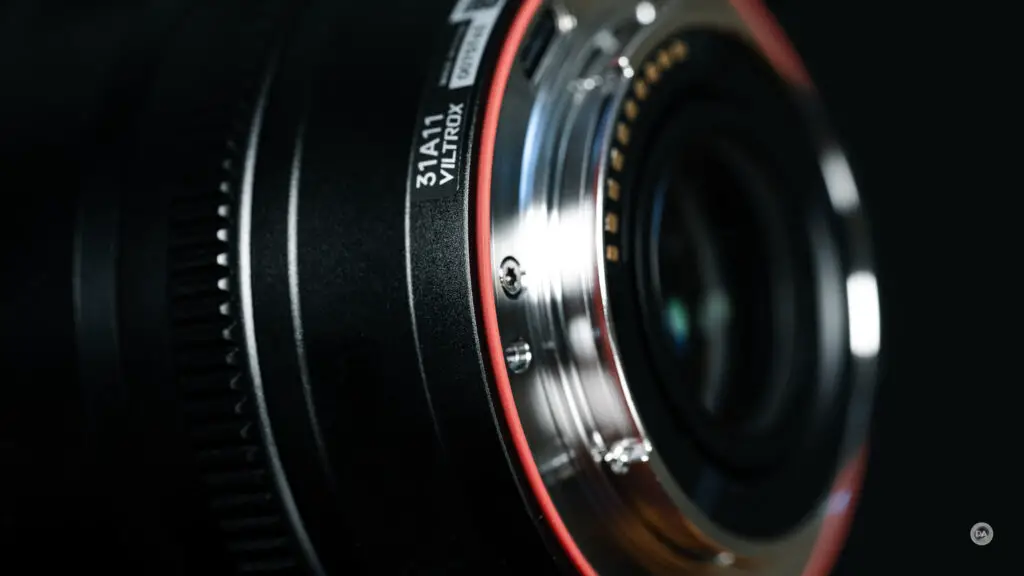
Viltrox continues with a trend that other lens makers are now imitating by including a USB-C port in the lens mount that allows you to do firmware updates right to the lens. I’m a fan of this approach, as it eliminates the need for a separate dock or lens station for firmware updates, and I find the process a little more intuitive than even doing firmware updates through the camera. This allows Viltrox to future proof their lenses and continue to improve them through firmware…and they do release updated firmware when needed.
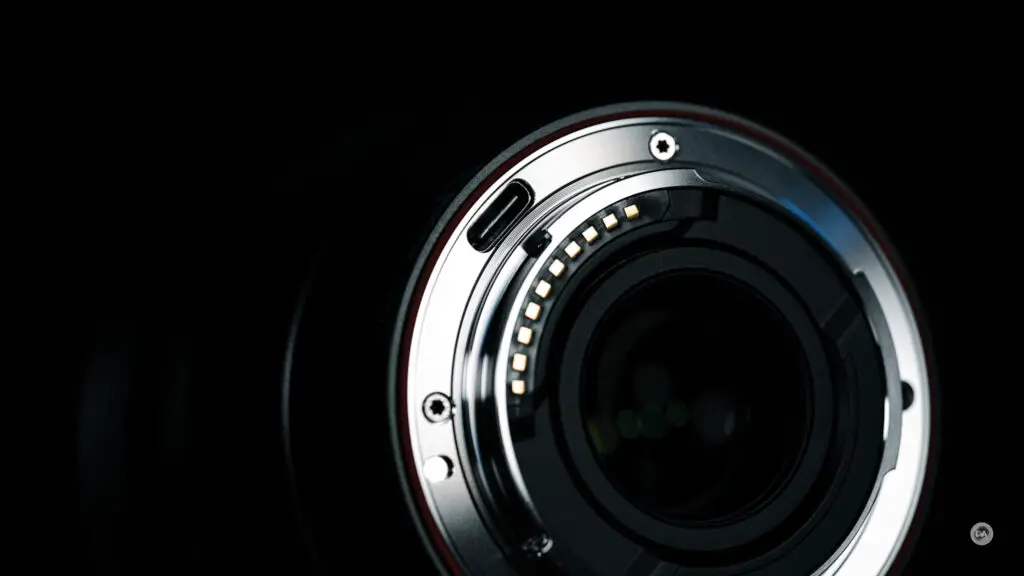
The manual focus ring is made of metal with tight ribbing. It moves smoothly and with nice damping, and, while manual focus is a simulation (this, like all autofocusing lenses on mirrorless, is focus-by-wire, meaning that input on the focus ring is actually routed through the focus motor which then moves the focusing group of elements), it’s very good manual focus simulation. Precise focus is easy to nail, as are focus pulls, though if you need to do a long focus pull you might find the rotation too long to do in one stroke.
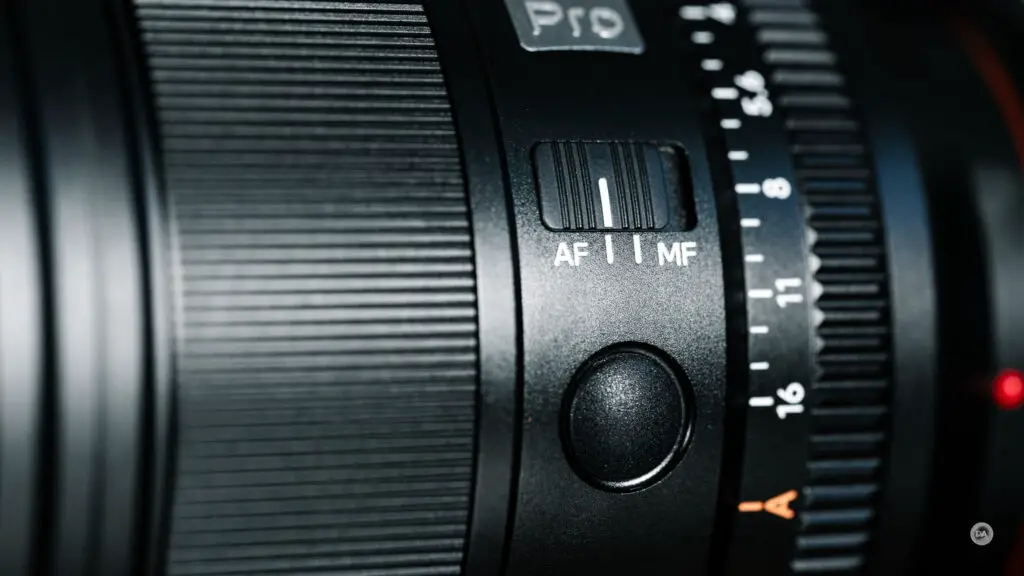
On the left side of the barrel is the AF/MF switch along with the focus hold button. The switch is nice and precise, and the focus hold button works well though its a little more “clicky” than Sony’s buttons. That custom button can be set to whatever function you prefer in the camera menu.
There is a “Viltrox” badge on the upper right side of the lens, and it feels like a nice balance to the Pro badge on the opposite side. The Click/Declick switch on the Sony version is now beneath that badge.
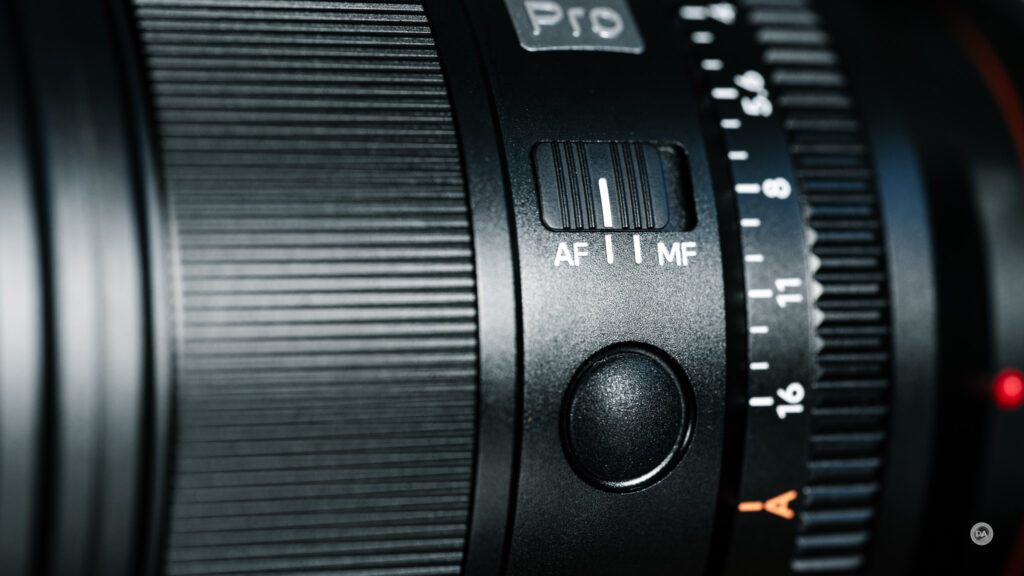
Viltrox lenses have traditionally been stuck at a very low 0.10x magnification figure (basically all of their lenses shared that magnification level), and this has been the one area where I’ve been consistently critical of their lenses. That’s mostly because I’ve been so impressed by their growth as a company that I believe them capable of more. And they are proving me right with the 27mm F1.2, as there is both an improved minimum focus distance (28cm) and maximum magnification figure (0.15x). That’s not high, per se, but it is competitive with the standard for 50mm(ish) lenses. Here’s what that magnification looks like:

That’s enough to get in there close and blur out the background thoroughly…particularly when you have an F1.2 aperture available.

The included lens hood is plastic and petal shaped. I would prefer a more definite click into place, as I found the lens hood was fairly easy to bump loose.
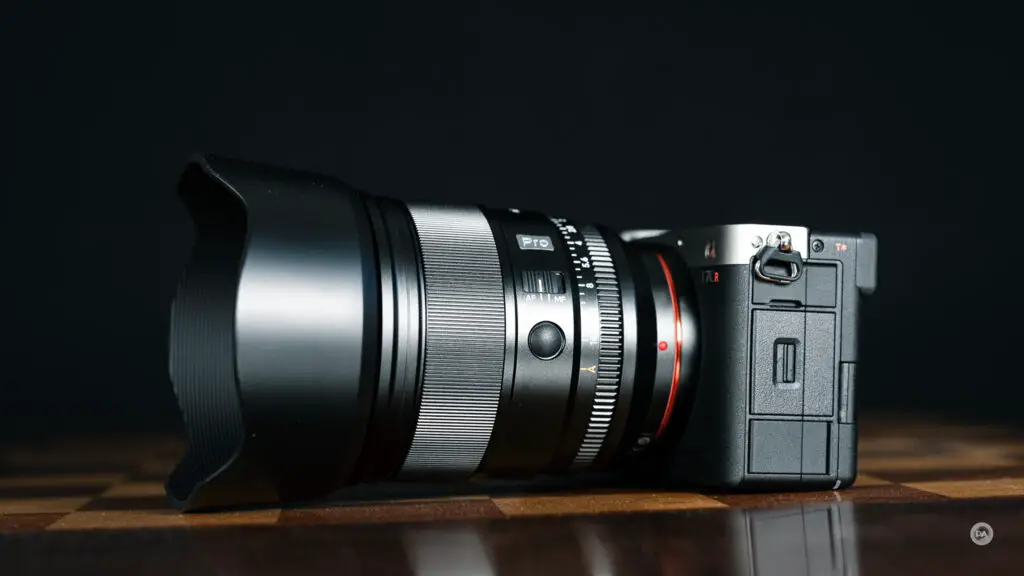
The lens hood is plastic, but the rest of the lens is all high grade in terms of materials. I would be hard pressed to point to another Sony APS-C lens that exceeds the build quality here. It’s a lot of lens for the money and brings a GM-like level of build and features to APS-C, and that’s something that rarely happens on Sony. There’s room to complain about the size and weight, but not much else.
Autofocus and Video
Viltrox employs a stepping motor (STM) for the focus system, but that is pretty much ubiquitous on mirrorless lenses save those equipped with higher end linear motors (which I’m hoping is in the pipeline for Viltrox’s upcoming 135mm F1.2 LAB series lens.) The performance of STM lenses vary widely these days, but Viltrox has been doing a great job of refining their STM motors to a similar level to a company like, say, Sigma. I found a huge difference in performance from the X-mount version of the 75mm F1.2 to the E-mount version. The former has been improved via firmware (I own one and continue to use it on my X-H2), but Sony’s autofocus is still a fair ways ahead of Fuji’s in general, and I found the E-mount version of the 75mm dramatically better, easily able to keep up with action and delivering excellent bird in flight results even at F1.2. Needless to say, I had high expectations for the 27mm, as I actually had a good result even on Fuji with that lens, finding it a great portrait option.
My expectations were met, with the Pro AF 27E able to track action and deliver pinpoint results even at F1.2:

I took dozens of shots at a pickup basketball game and had no problem catching moments of quick action with the lens.

I also had excellent results in taking photos of the pets, with eye tracking nailing focus at F1.2:

That was true even when shooting up towards Nala with her face turned away from the available light through the window.

My formal AF tests showed good focus speed, with quick transitions from subject to subject either indoors or outdoors. Focus was confident and there were no visible steps.
I can hear nothing from the focus motor under normal operation. If I put my ear next to the lens and focus back and forth, I can hear the faintest of clicking sounds. I suspect you’ll never hear focus noise unless you do the same.
The Pro AF 27E was quick and accurate for street style photography as well.

I also had no problem taking photos of narrow depth of field subjects. Autofocus was fast, quiet, and accurate in general for stills.

There’s little to complain about on the video side of things, too. I’ve used the Pro AF 27E for roughly half a dozen of my video review segments, and focus was rock steady on my face throughout the typically 12-20 minutes of recording time. Video focus pulls were fast, smooth, and accurate, with no hesitation, visible steps, or settling before locking focus.
Focus transitions were also smooth and confident from my hand to my eye and vice versa in my “hand test” where I alternately block the lens from seeing my face with my hand and then remove it.
In all of these tests the only negative was that focus breathing is a little higher than what I would like. It does slightly pull you out of the shot when a quick focus change is taking place.
But that’s about it for negatives. Focus was generally a treat, delivering one well focused image after another.

Image Quality Breakdown
Viltrox definitely upped their game in optical design with the release of the Pro AF 75mm F1.2, and their consistency since that point has caused me to expect nothing but excellence from them in their optical designs. The Pro AF 27mm F1.2 is clearly no exception, with an optical design of 15 elements in 11 groups with a total of 8 of those elements being exotic elements of the aspherical, ED, or HR type. The MF chart is exceptional, showing extremely sharp performance across the frame. Even the corners are sharper than many lenses in the center.
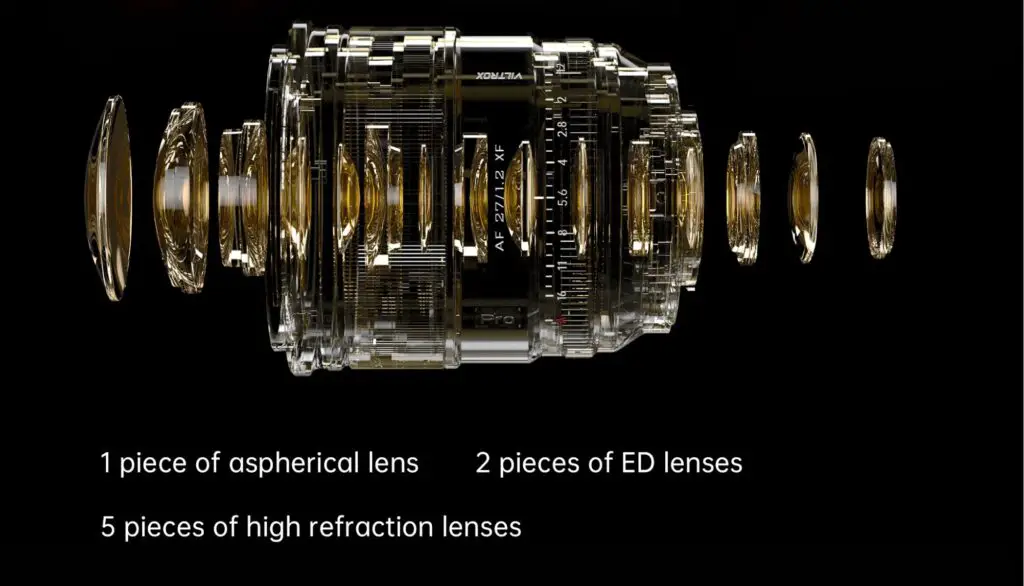
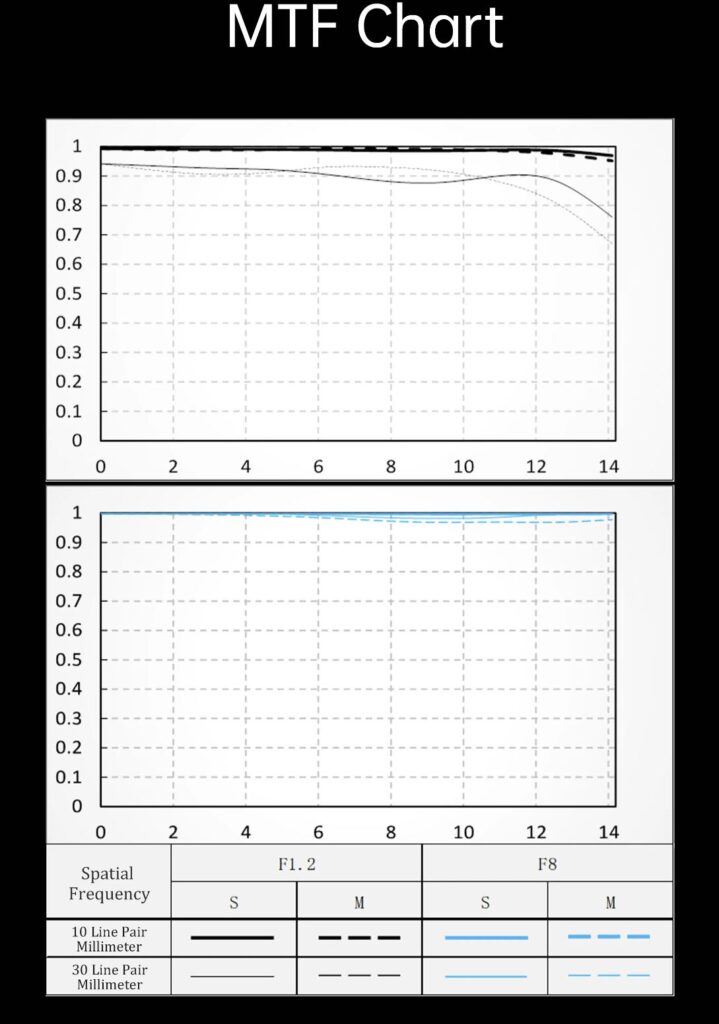
In my recent reviews of the Sirui Sniper series (also F1.2 autofocus lenses for APS-C cameras), I had demonstrate a photo where I combined the F1.2 bokeh with a stopped down (F2-F2.8) image of the subject in order to get an image that was both sharp on the subject but with nice bokeh. The Viltrox Pro AF 27mm F1.2 allows you to have it both in one shot; this F1.2 image has nice bokeh along with very crisp rendering of the subject.

We’ll take a deeper dive in to performance here, starting with a look at vignette and distortion.
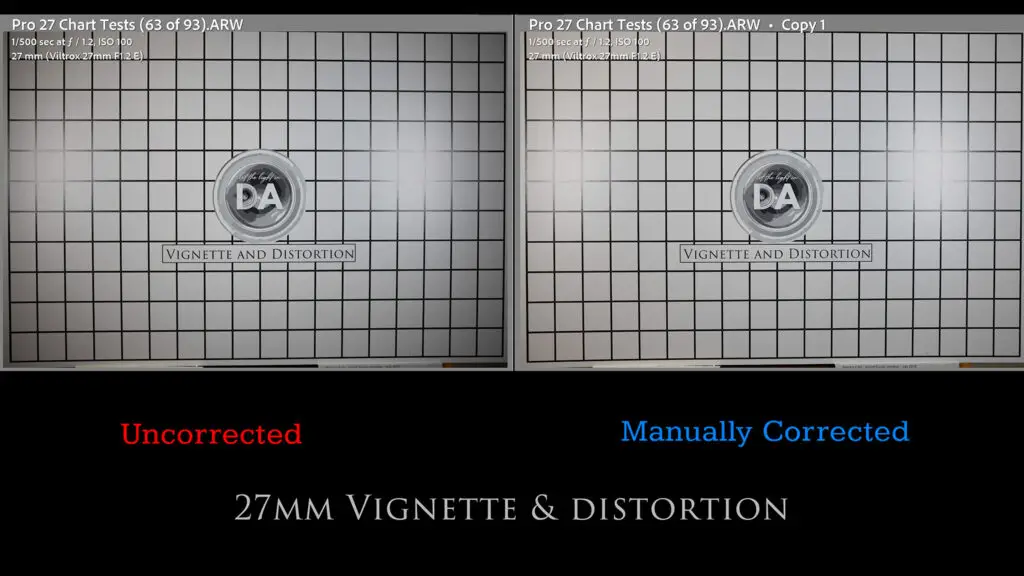
Unusually for my experience, I saw about an equal amount of vignette on Sony as I did on Fuji. Distortion is minimal (I used a +2 to correct but you could get by with none) but I used a +68 to correct vignette (a little over two stops).
This uncorrected, F1.2 shot with snow in the foreground shows that vignette will be noticeable in some settings if you don’t correct for it.

There will be some scenes where the vignette naturally draws the eye to the subject and is desirable, but I typically would rather add vignette to taste in post. The vignette is just about the only optical weakness, however, as this image shows something else impressive. You can’t tell it from the photo, but the light here was so bright that I couldn’t hardly look at it. The sun is blown out due to the 1/8000th shutter speed limit of the camera that I was using for the shot, but it was incredibly bright and then reflecting off the snow and frosted trees and shrubs. But even at F1.2 there is no loss of contrast and no ghosting artifacts. Viltrox has managed to develop high end coatings…fast! The recent F1.2 lenses from Sirui that I tested had terrible flaring.
Also well controlled is longitudinal chromatic aberrations before an after the plane of focus. There is some mild green fringing after the plane of focus here, but it is well controlled overall.
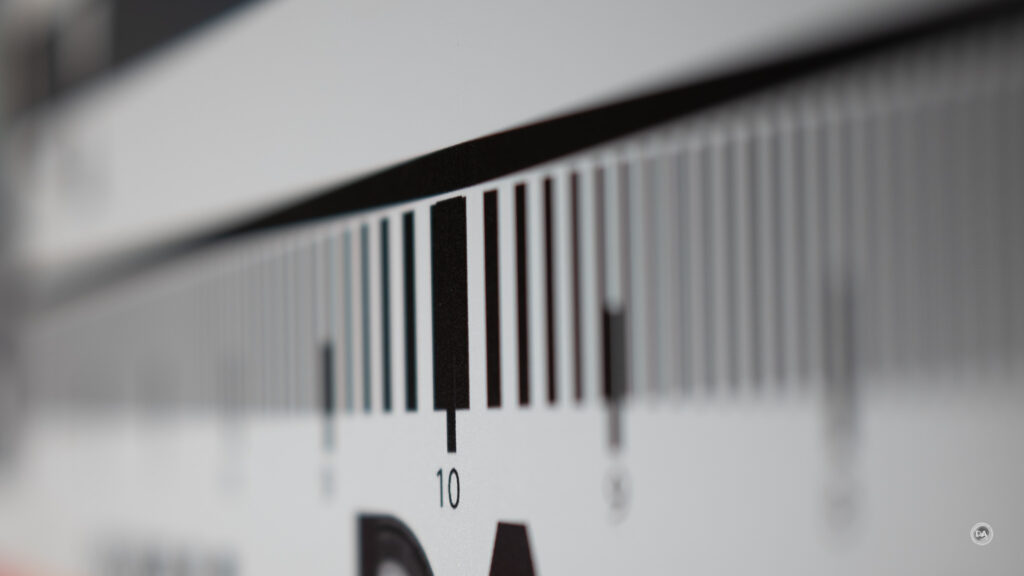
This time of year I like to shoot this crystal deer decoration that my wife puts out, as it really tests a lens’ ability to produce real world contrast and control fringing. The Pro AF 27E was a champ in this test.
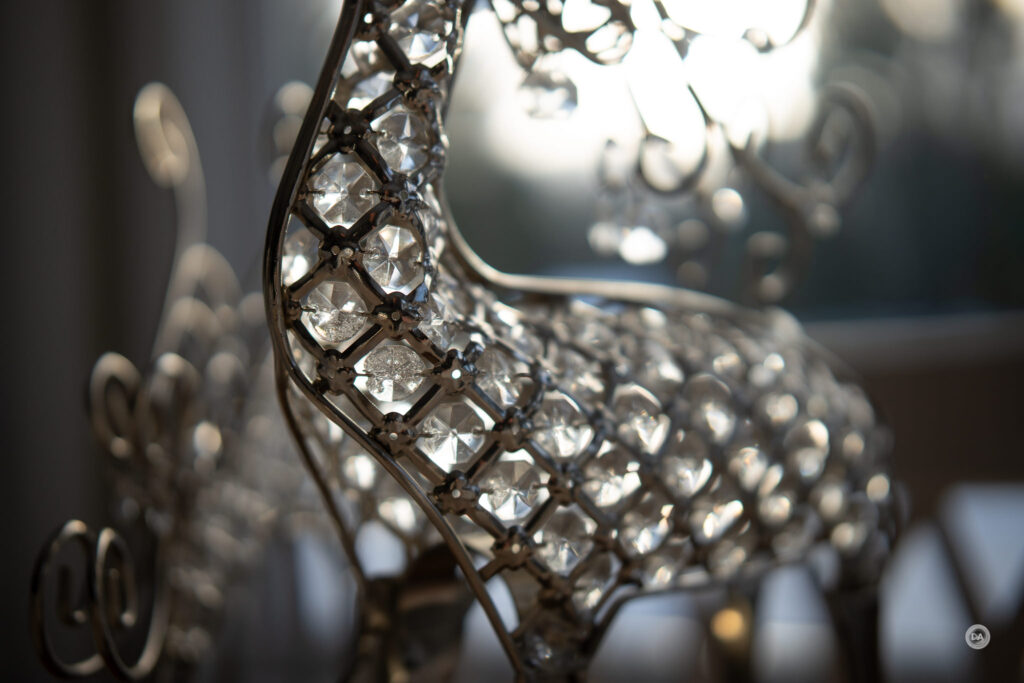
Lateral chromatic aberrations were also well controlled, with clean transitions from black to white in the along the edges.

Great stuff to begin with!
Testing on Sony allows me to do something I can’t do on Fuji, and that is see how much of the full frame image circle an APS-C lens cover. Those hoping that this was secretly a full frame lens will be disappointed; the majority of the edges of the full frame image circle are covered by hard, mechanical vignette.
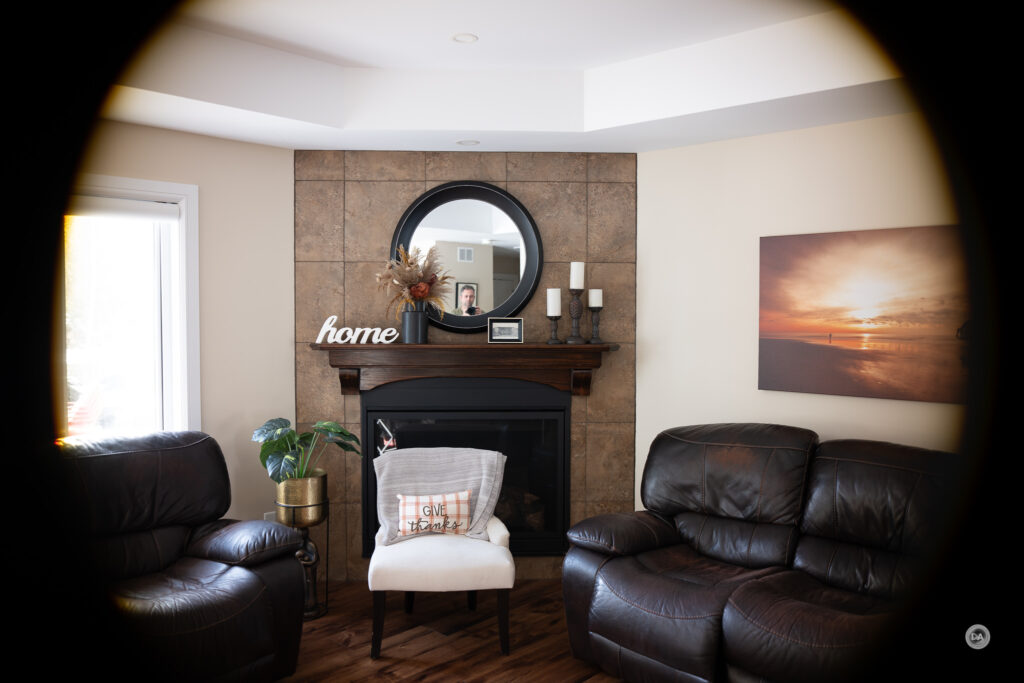
If I crop in enough to eliminate the mechanical vignette, I get an image that is slightly wider but not radically so:
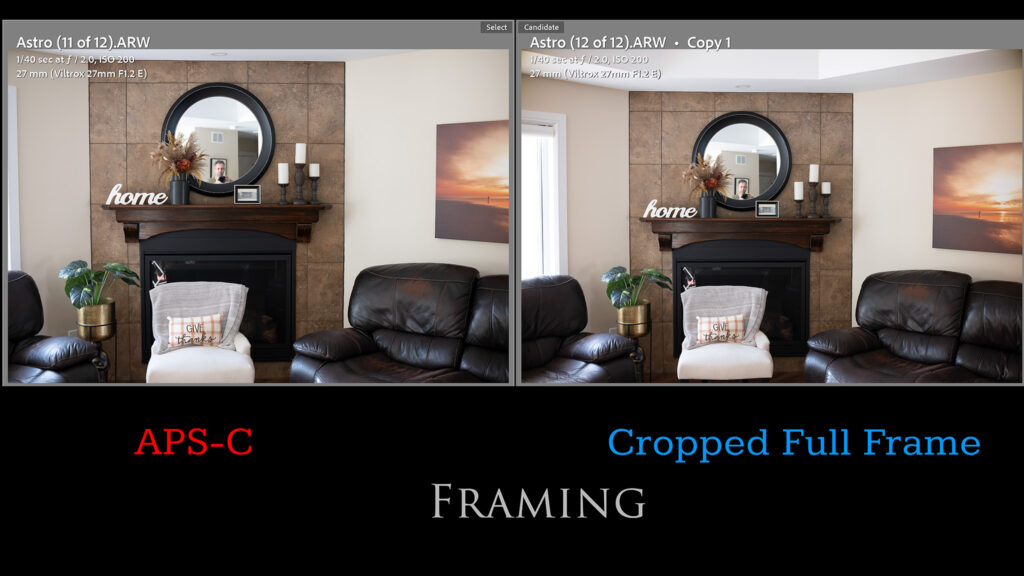
The APS-C crop is 26MP (6240 x 4160); the full framed cropped image is 7110 x 4740, or over 33MP. That gets you to a roughly 33mm angle of view. That might be enough for some people to consider it.
The Viltrox Pro AF 27mm F1.2 joined a VERY short list of lenses sharp enough to deal with Fuji’s 40MP sensor in cameras like my X-H2. It’s almost too much; very few lenses look great on it. The fact that Viltrox fared fine there tells me it won’t have much to worry about here on a 26MP resolution point on Sony…and it doesn’t. Here’s a look at the test chart:
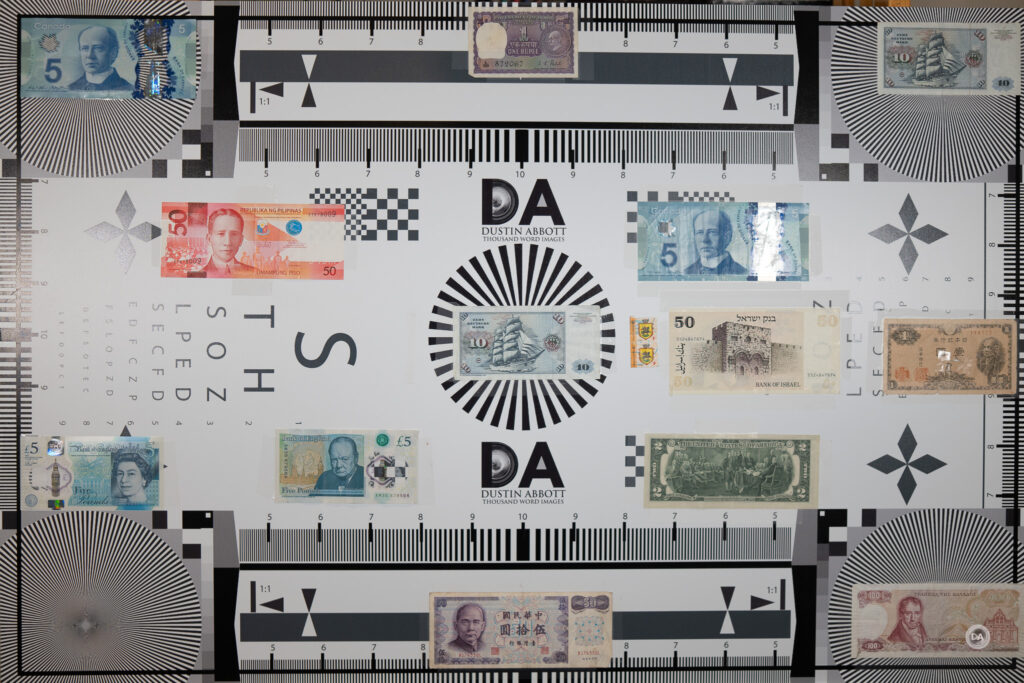
And here are F1.2 crops from across the frame at nearly 200%:
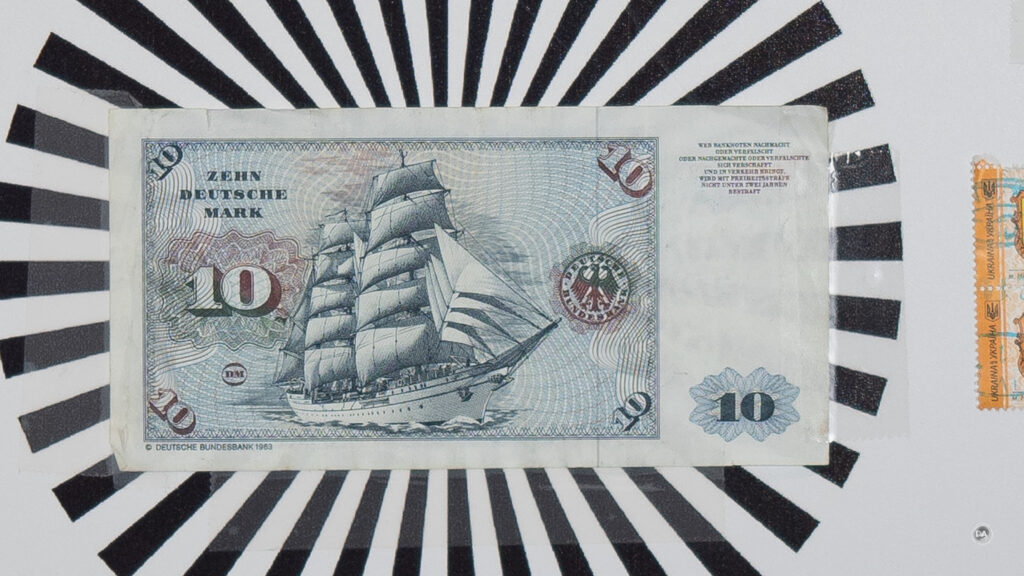


We can see that there is a good amount of resolution even into the corners, and contrast there looks good as well.
This translates into real world images as well, and while depth of field will often impact an F1.2 image producing sharp results everywhere, you can see that the lens produces perfectly credible landscape results at F1.2.



There was plenty of both sharpness and focus accuracy to deliver good results in a church setting at F1.2:


Stopping down to F1.4 produces only minimal improvement, and, in fact, the camera metered the same and gave the same shutter speed during my formal tests. But don’t read too much into that; the histogram definitely looks different. There’s a bit more contrast to the F1.4 image, and less vignette makes the image look brighter, which is probably what impacted the metering.
There’s a further improvement by F1.8 with more contrast throughout the image. The corners in particular look brighter and sharper:
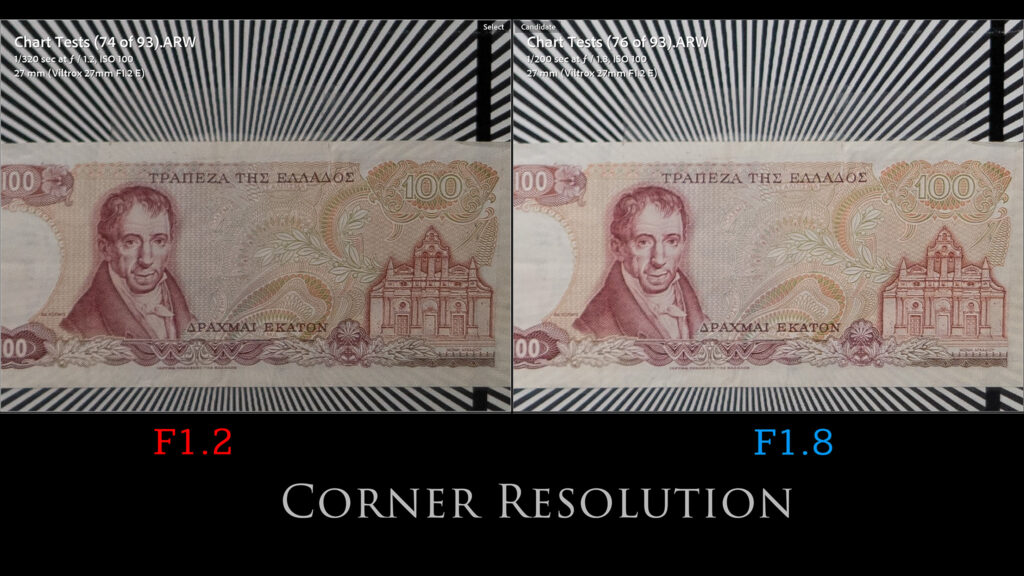
Real world contrast and detail looks fantastic at F2. This shot of Nala shots off the ability of the lens to render fine lines:


After F2 you can pretty much just select the aperture that works best for your depth of field, as you get very close image quality through F11, and even F16 (minimum aperture) looks fine on 26Mp, with just a little less contrast and detail than at F11:
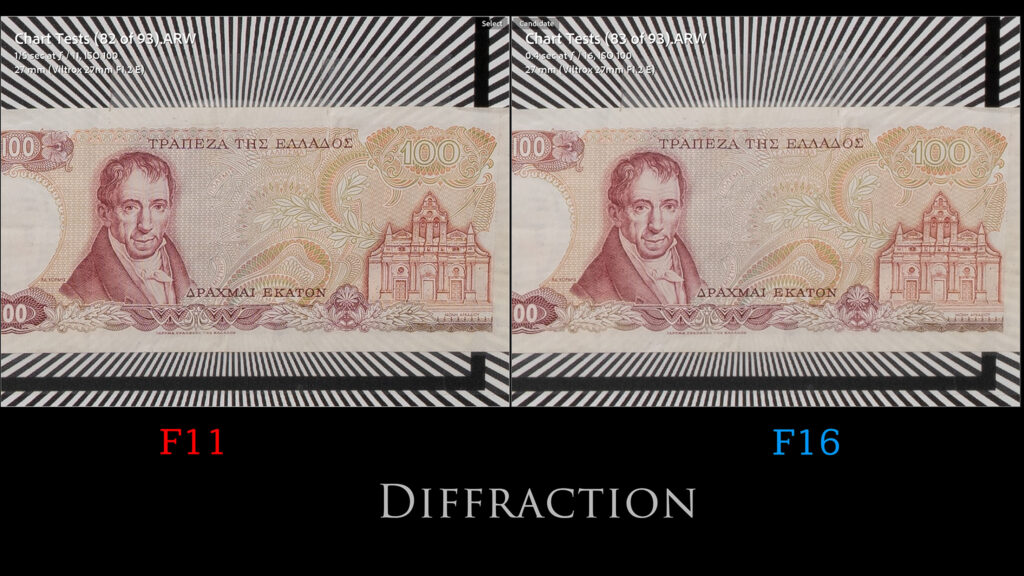
Landscape images look awesome, with great detail throughout the frame.


Viltrox’s optical glass has improved a lot starting with the first Pro lens, and so I found colors look great now from this lens.

Viltrox has managed to nail the rare combination of both extremely sharp lenses that also have very nice bokeh.
This image taken during my autofocus test shows the nice, soft bokeh you can achieve at F1.2:

The geometry for specular highlights near the edge of the frame isn’t perfect at F1.2, but the specular highlights also look pretty clean without either outlining or internal busyness.

The high aperture blade count means that that if you stop down just a bit, however, the geometry improves to nearly perfectly circular across the frame and stays that way for quite a while. Look at how perfect the bokeh circles look even at F1.6:

Not much to complain about there. Here’s another shot that shows that nice result.
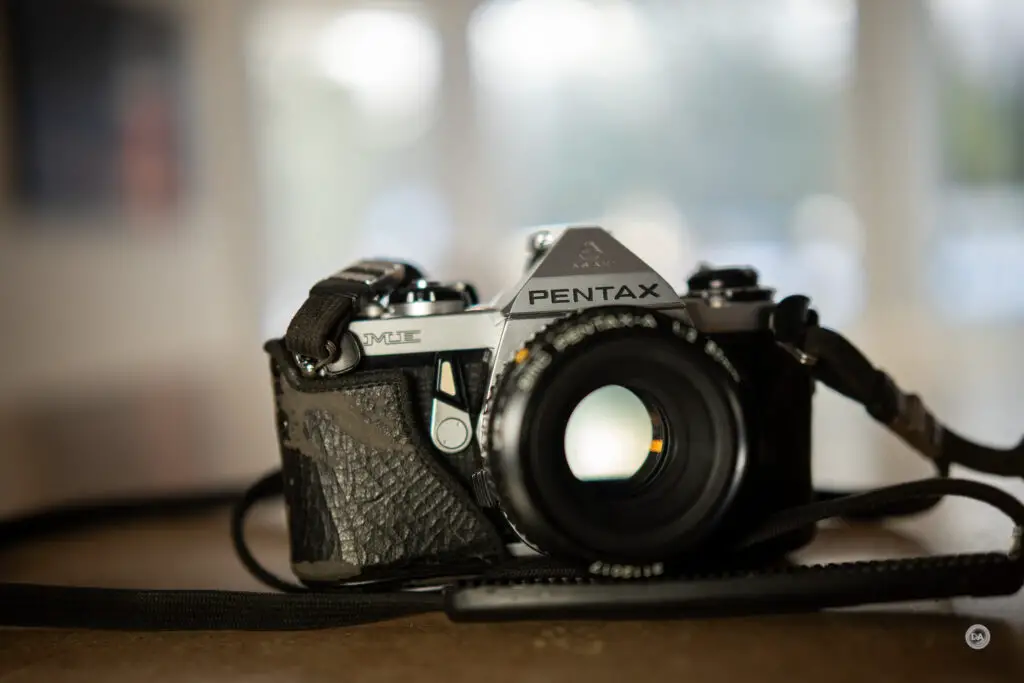
I did take a look at coma performance, and found that this was yet another area where the Pro AF 27E did a great job. The sharp performance of the lens dictates that star points are nice and crisp and with no fringing to reduce their contrast. There’s a little bit of deformation in the corners, but it is very minimal. This is a very nice astrophotography lens, and the bright aperture means that it is easy to shoot astro at lower ISO speeds (I used ISO 500 for this image):
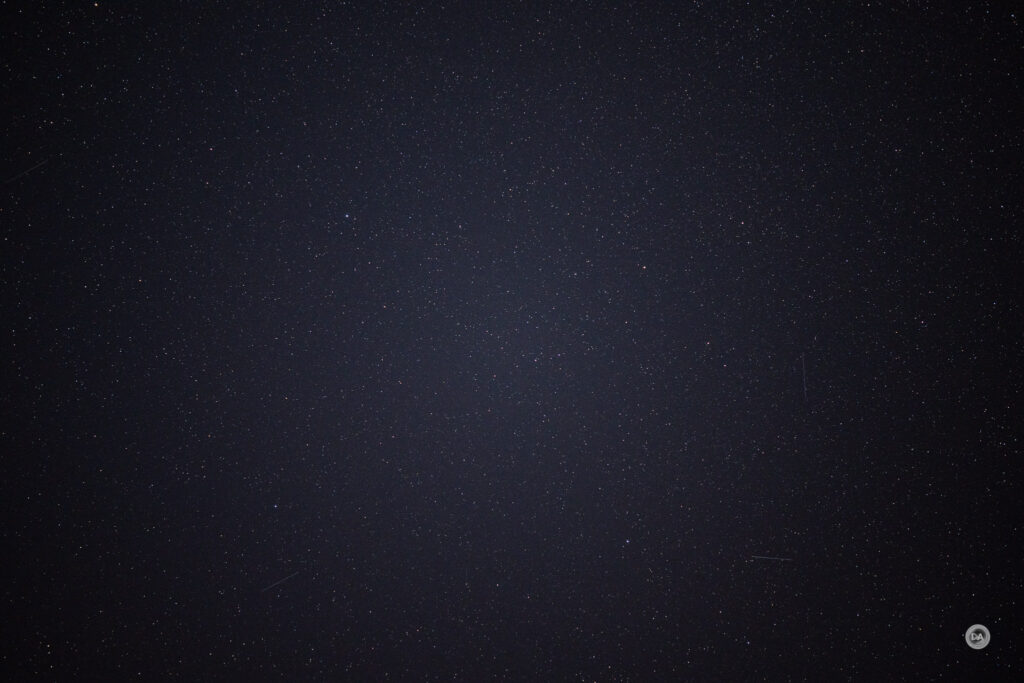
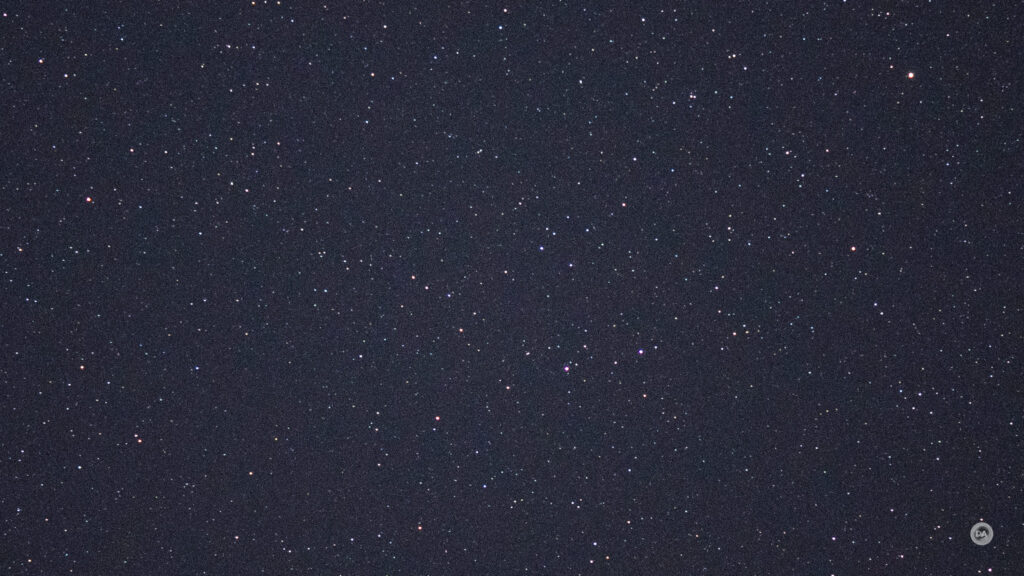

As noted previously, flare resistance is another area of strength. Whether at large apertures or small, there is minimal flaring in either ghosting or loss of contrast.

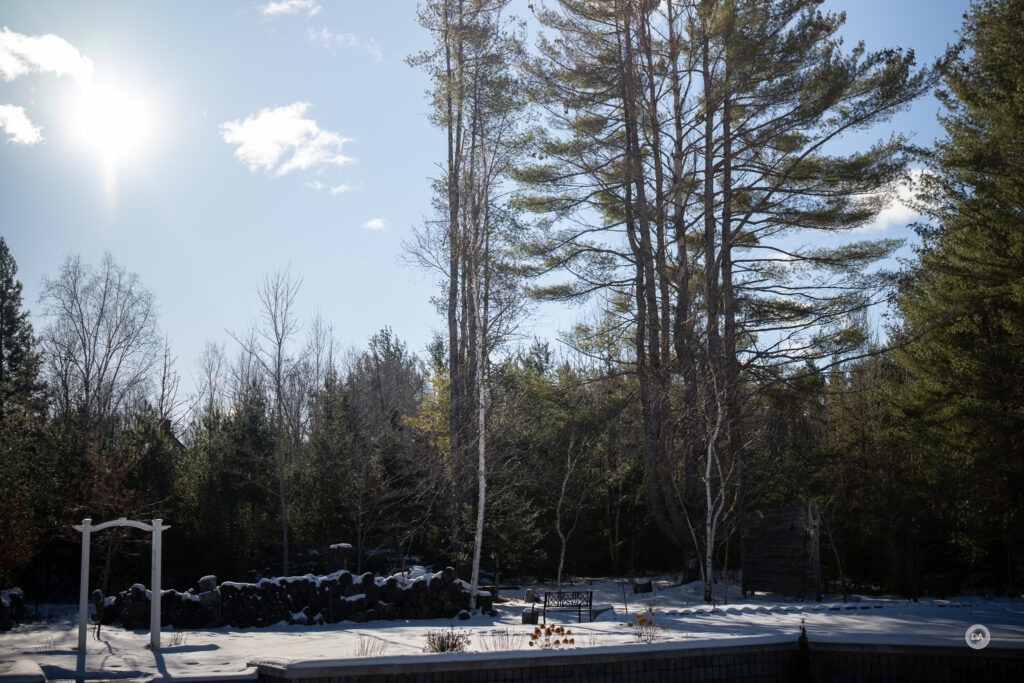
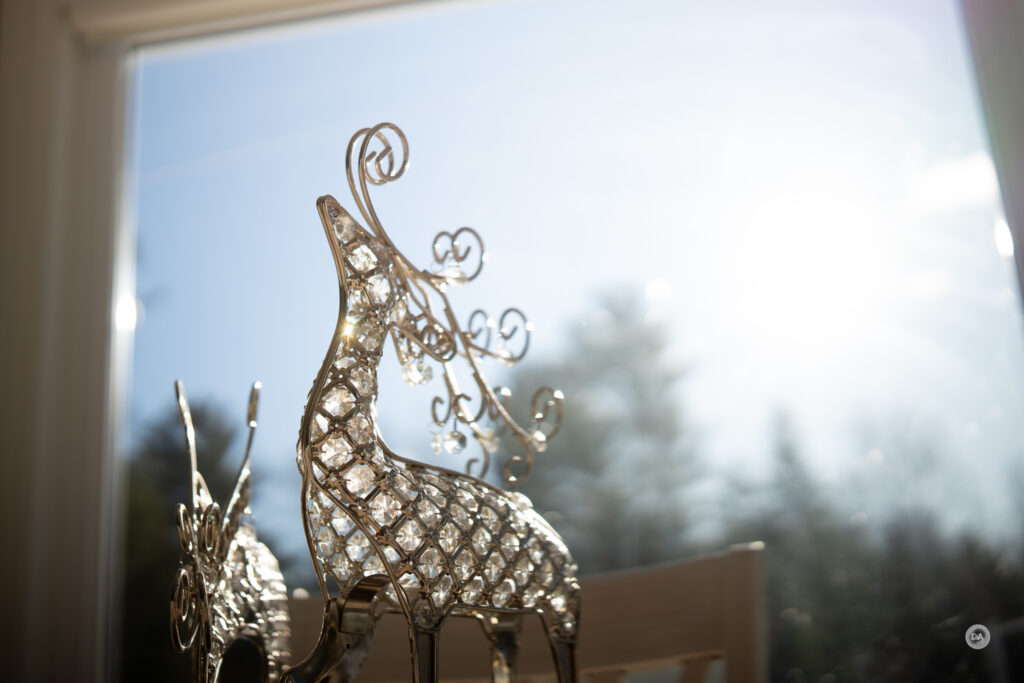
This image at F11 shows both great flare resistance and also give you a look at sunbursts (22 blades due to the 11 aperture blades).

No lens is perfect, but this Viltrox Pro AF 27mm F1.2 has very little negatives you can point to. It produces one beautiful image after another, managing to do a fairly good job of being both technically and artistically successful.

If you want to see more images, check out the image gallery linked here.
Conclusion
I was already a fan of the Viltrox Pro AF 27mm F1.2 after reviewing it on Fuji, but the Sony E-mount versions of these Pro Series lenses have been better still. More robust features, and thus better handling, more video specific options (like the ability to declick the aperture), and then autofocus just works better on Sony.

The list of potential negatives is extremely brief, but these include a larger size and heavier weight than in optimal on APS-C. There really isn’t much to complain about outside of that.

There aren’t really any direct competitors at 27mm, so some might complain about the oddball focal length compared to the more conventional 33mm (50mm equivalent). It’s the same debate as whether 40mm or 50mm is a more useful “normal” focal length. I personally love this focal length, however, particularly when it is paired with such a large maximum aperture. The huge maximum aperture of the Viltrox Pro AF 27E makes up for the shorter focal length for blurring out the background, giving you a little more flexibility in framing while still having the ability to create a shallow depth of field. This is a lens that, to me, seems worth its price tag of the mid-$500s USD (less if you use the discount code below). The Viltrox Pro AF series has had an impact on the APS-C market similar to what Sigma did to the full frame space when they launched their ART series. I look forward to what comes next!

Pros:
- Professional grade build
- Even more features
- Advanced aperture control including declick option
- AF/MF and Focus Hold Button
- Thorough weather sealing
- Fast, quiet, and accurate autofocus
- Excellent eye AF tracking
- Good video AF, including confident video focus pulls
- Extremely sharp lens
- Low aberrations
- Good flare control
- Good coma control
- Nice bokeh
- Excellent flare resistance
- Great price to performance ratio
Cons:
- Large and heavy for an APS-C lens
- Some focus breathing
- Some vignette (if we are nitpicking!)
_________________________________________________________________________
GEAR USED:
Purchase the Viltrox Pro AF 27mm F1.2 @ B&H Photo | Viltrox (use code DUSTINABBOTT for 8% off) | Adorama | Amazon | Amazon Canada | Amazon UK | Amazon Germany | Pergear
___________________________________________________________________
Purchase the Sony a7RV @ B&H Photo | Adorama | Amazon | Camera Canada | Sony Canada | Amazon Canada | Amazon UK | Amazon Germany
__________________________________________________________________
Purchase the Sony a7IV @ B&H Photo | Adorama | Amazon | Camera Canada | Sony Canada | Amazon Canada | Amazon UK | Amazon Germany
_________________________________________________________________
Purchase the Sony Alpha 1 @ Camera Canada | B&H Photo | Adorama | Amazon | Sony Canada | Amazon Canada | Amazon UK | Amazon Germany | Ebay
_________________________________________________________________
Want to support this channel? Use these affiliate links to shop at: B&H Photo | Amazon | Adorama | Camera Canada | Amazon Canada | Amazon UK | Ebay | Make a donation via Paypal
Buy DA Merchandise https://bit.ly/TWIMerch
Keywords: Viltrox, Pro, AF, Viltrox Pro AF 27mm, 27mm, F1.2, Viltrox Pro AF 27mm F1.2, APS-C, Review, Sony Alpha 1, Sony a7RV, Review, Hands On, Dustin Abbott, Real World, Comparison, Sharpness, Bokeh, Flare Resistance, Autofocus, Image Quality, Sample Images, Video, Photography, let the light in, weathersealing, #letthelightin, DA
DISCLAIMER: This article and description contains affiliate links, which means that if you click on one of the product links, I’ll receive a small commission. As an Amazon Associate I earn from qualifying purchases.










 Sirui Sniper 75mm F1.2 Review
Sirui Sniper 75mm F1.2 Review  Sirui Sniper 75mm F1.2 Gallery
Sirui Sniper 75mm F1.2 Gallery  Tamron 70-300mm F4.5-6.3 RXD Z-mount Review
Tamron 70-300mm F4.5-6.3 RXD Z-mount Review  Nikkor Z 40mm F2 Review
Nikkor Z 40mm F2 Review 





